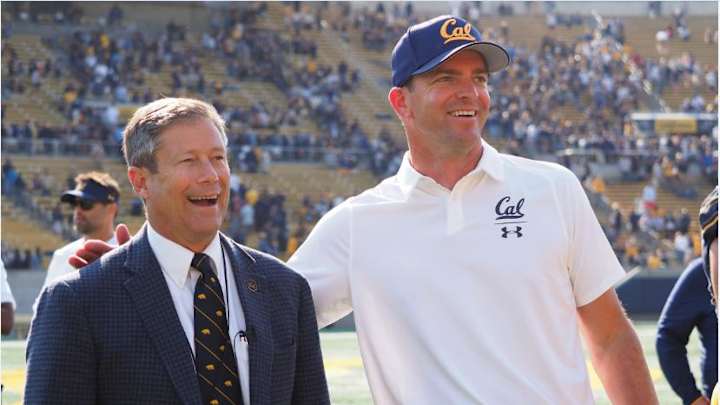Pac-12 Reporter Has Pessimistic Message About Future of Cal Football

A pessimistic opinion about Cal's football future following the departure of USC and UCLA is coming from a knowledgeable source.
Jon Wilner of the San Jose Mercury-News knows more about what's happening in the Pac-12 than any reporter in the country. He is the one who broke the news that USC and UCLA were planning to leave the Pac-12 to join the Big Ten.
So when he has an opinion about something regarding members of the Pac-12 it's worth listening to what he has to say.
In a story posted on Saturday, Wilner was asked a number of questions about the ramifications of the Pac-12 losing USC and UCLA, and one question focused on Cal and Stanford.
Here is the question and Wilner's response:
Curious for your take on what this means for Cal and Stanford and how other conferences value/think about the Bay Area media market. — @nwpapas
Do you think Cal and Stanford might use this opportunity to exit football? — @BearFlagFan
In all candor, I believe this could mark the beginning of the end of major college football for the Bay Area schools.
Their relatively low value within the college football marketplace is one reason for that bleak outlook.
Yes, the Bay Area is a huge media market, and that mattered a decade ago when it was all about how many cable homes were in your footprint.
Now, the main driver is brand value: Fox and ESPN will pay for the football programs that generate ratings and are most likely to land in prime TV windows. Neither Bay Area team clears those bars.
(From the standpoint of potential membership in the Big Ten, why would Northwestern ever want the conference to toss Stanford a lifeline? They are direct competitors on the recruiting trail.)
The other reason for our skepticism is the economic landscape.
At some point in the near future, college athletes likely will be declared employees, or pseudo-employees, and receive compensation from the schools for their services.
There’s no chance Stanford would ever do that, and we doubt Cal would take the plunge. On both campuses, the faculty would revolt like it’s Paris in 1789.
Add the unseemly aspect of name, image and likeness — when it’s used as a proxy for pay-for-play — and the entire sport is careening in a direction that conflicts with the institutional philosophies on both sides of the Bay.
Yikes. This does not sound good for Cal.
The Golden Bears' brain trust has two years to figure this out since USC and UCLA will remain with the Pac-12 for the 2022-23 and 2023-24 school years.
But consider the reports over the last 48 hours regarding Pac-12 teams that could leave the conference. It starts with Oregon and Washington, because they are the most attractive programs. But there has also been mention of Arizona, Arizona State, Utah and Colorado having appeal for the Big 12.
There has been little -- if any -- mention of Cal or Stanford being attractive to another conference. They are sitting in a precarious limbo, especially if other schools leave the Pac-12.
It may take some creative thinking by Cal athletic director Jim Knowlton and his advisors to come up with a plan that keeps the Golden Bears' football program relevant.
My personal opinion is that Cal can get that done, and that the Bears will continue to be a "big-time" college football and basketball program after USC and UCLA leave for the Big Ten in 2024. It will require some shrewd maneuvering and perhaps some humility to come up with a viable option, but it can be done, perhaps as a joint venture with Stanford.
Check out Wilner's Sunday report on the five factors that will determine the Pac-12's future:
#Pac12 survival guide: Five forces that will define the path to salvation, or extinction (with correct link)https://t.co/SBODDDEDkL
— Jon Wilner (@wilnerhotline) July 3, 2022
.
Cover photo of Cal athletic director Jim Knowlton and Justin Wilcox by Kelley L. Cox, USA TODAY Sports
.
Follow Cal Sports Report on Twitter: @jakecurtis53
Find Cal Sports Report on Facebook by going to https://www.facebook.com/si.calsportsreport
.
.

Jake Curtis worked in the San Francisco Chronicle sports department for 27 years, covering virtually every sport, including numerous Final Fours, several college football national championship games, an NBA Finals, world championship boxing matches and a World Cup. He was a Cal beat writer for many of those years, and won awards for his feature stories.